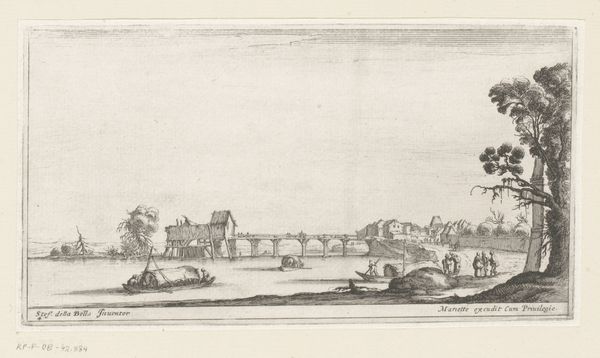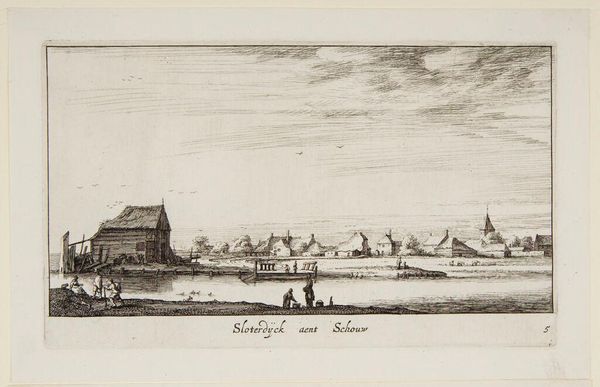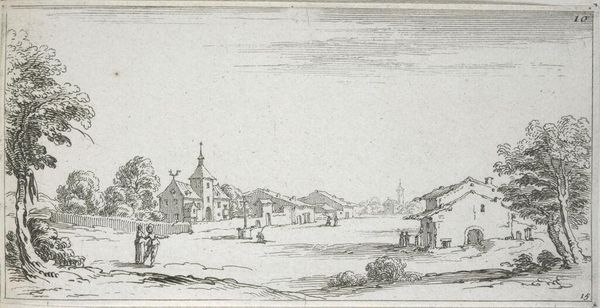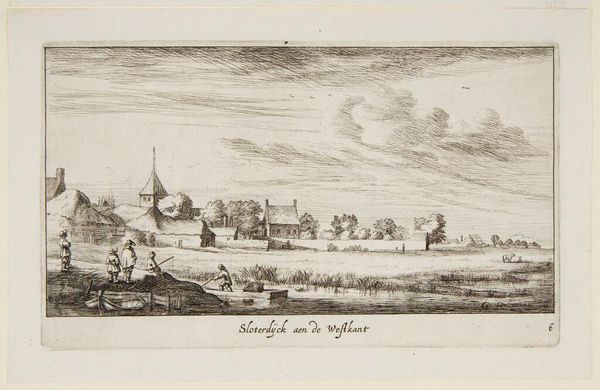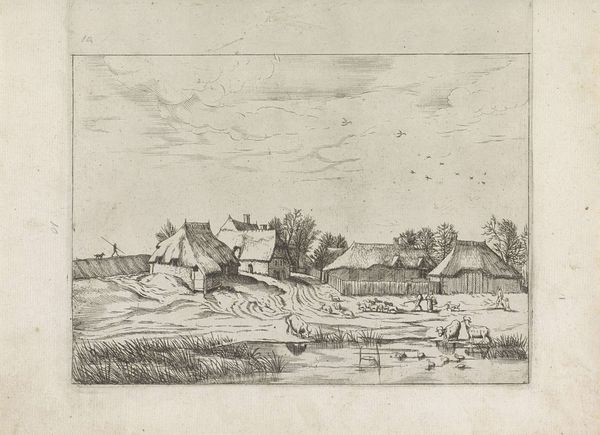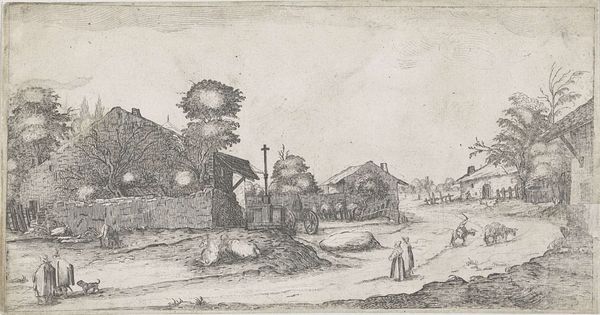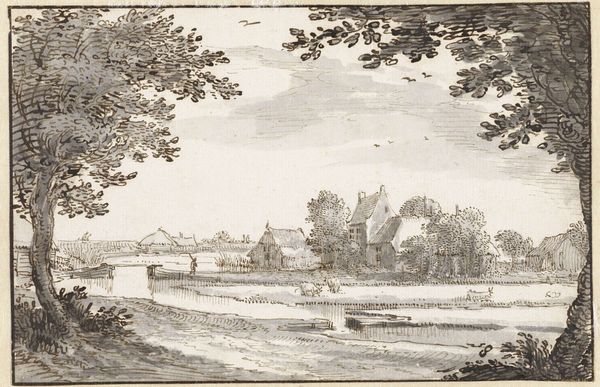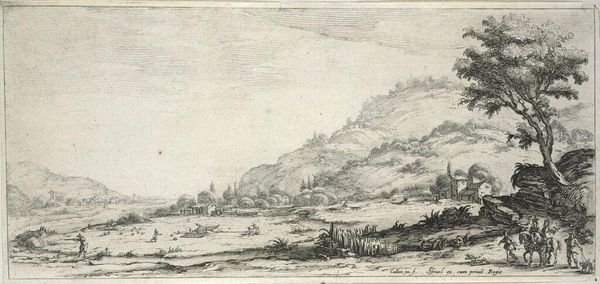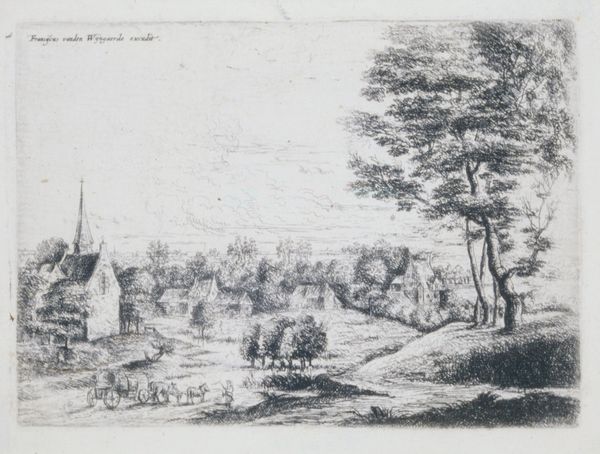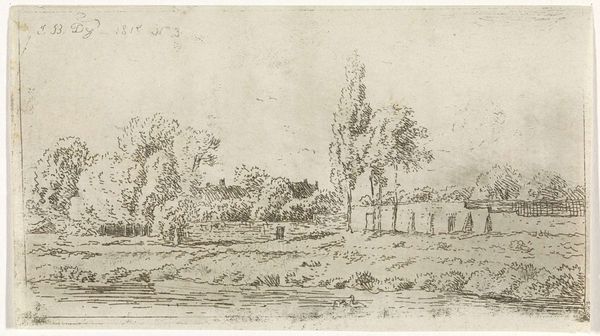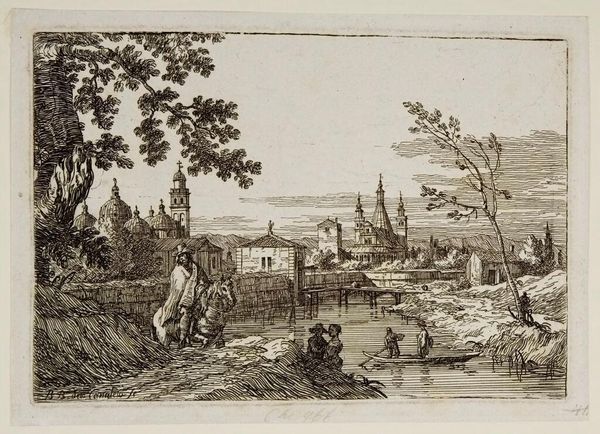
A Bridge, a Watermill at Its Left End and a Village at Its Right c. 17th century
0:00
0:00
Dimensions: 11 x 20.7 cm (4 5/16 x 8 1/8 in.)
Copyright: CC0 1.0
Curator: Here we have a detailed rendering by François Collignon entitled "A Bridge, a Watermill at Its Left End and a Village at Its Right," currently residing in the Harvard Art Museums. Editor: The starkness of the etching gives it a kind of weary, seen-better-days feel. Almost like a sketch from someone who's walked a long road. Curator: Indeed. Bridges, especially in art, often symbolize connection, transition. I wonder what socio-economic realities influenced Collignon’s choice to foreground a watermill, with its implications of labor and resource extraction, juxtaposed against a village. Editor: I'm drawn to the way the watermill and the bridge's structure suggest a careful balance between human construction and the natural world. Considering the labor required to build such infrastructure, it makes you wonder about the conditions of the workers involved. Curator: It certainly pushes us to consider whose stories are often obscured in these pastoral scenes. The scale of the village, the position of the figures... they prompt questions about access and power dynamics. Editor: Exactly. And the material reality of that bridge, those buildings... what were they made of? Who profited from their construction? The print sparks a deeper inquiry into the everyday lives of those who lived and worked in this environment. Curator: Well, it highlights the stories we often overlook when considering landscapes—the stories of labor, access, and social structure. Editor: It definitely adds a layer of critical thinking to what at first glance looks like a simple landscape scene.
Comments
No comments
Be the first to comment and join the conversation on the ultimate creative platform.

